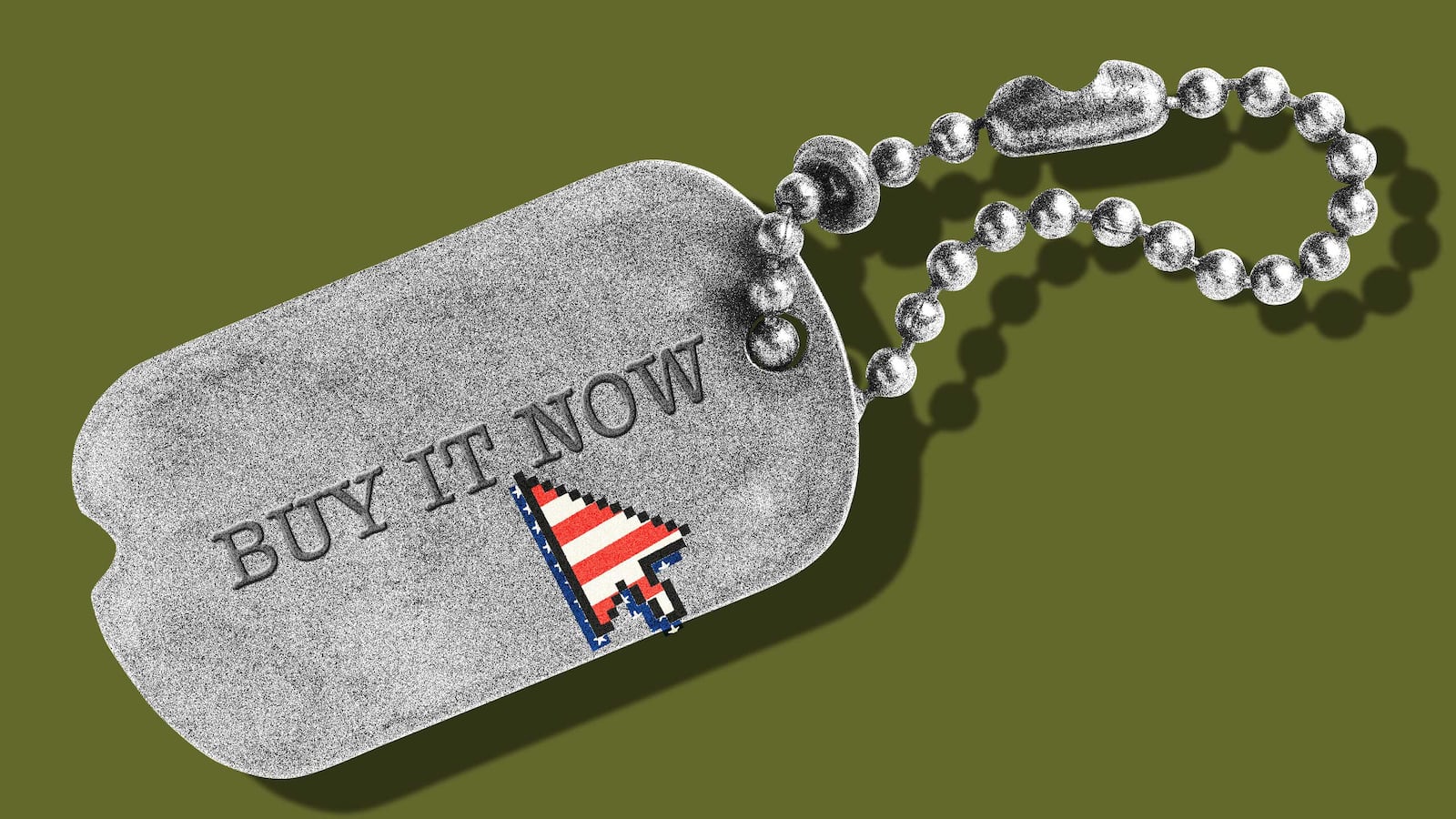For five years starting in 2012, the French historian Antonin DeHays made regular trips from his home in Prince George’s County, Maryland, to the National Archives in College Park.
Once there, he did what any historian would do—he settled himself into the public research room and began to use his official research identification card to request artifacts and documents relating to his area of expertise—WWII and, in particular, the D-Day invasion at Normandy.
His requests weren’t unusual. After all, the National Archives were frequented by researchers such as him and their records no doubt aided DeHays in writing his 2015 book titled Sainte Mere-Eglise: An American Sanctuary in Normandy.
But the picture DeHays presented of a young and studious historian getting his hands on as much research as he could find wasn’t the full story.
Most historians were after knowledge; DeHays wanted a little something extra.
For five years, DeHays walked out of the National Archives with more than he had arrived.
His criminal cache amounted to at least 291 dog tags, most of which belonged to U.S. airmen who were shot down in enemy territory during WWII, and 134 files including many personal documents.
“The theft of our history should anger any citizen, but as a veteran I am shocked at allegations that a historian would show such disregard for records and artifacts documenting those captured or killed in World War II,” said the 10th Archivist of the United States David Ferriero in a press release after DeHays was arrested at the age of 32 in June 2017.
“Although we have increased our security measures in recent years, this case highlights the constant threat our records and artifacts face and why the security of the holdings of the National Archives is my highest priority.”
Dog tags have a long and storied history in the United States. While, today, they may represent a universal sign of enlistment—a part of every soldiers’ standard uniform and a symbol of the broader military establishment—their origin arose out of a practical need encountered in early U.S. conflicts.
It took a war on American soil between Americans to drive home the fact that thousands of local sons (not so much daughters at the time) were dying without identification.
According to Ginger Cucolo, author of Dog Tags: The History, Personal Stories, Cultural Impact, and Future of Military Identification, it was during the Civil War that American soldiers started worrying about what would happen to them if they died anonymously on the battlefield.
To counteract the emotional weight of perishing without their families ever knowing what happened, soldiers would purchase identification pins from Harper’s Weekly, carry engraved personal items like watches if they happened to be wealthy enough to possess such things, or, as a last resort, pin a piece of paper scrawled with their names to their persons during battle.
Despite these precautions, over 150,000 soldiers died without ever being identified on the battlefields of the Civil War. “I saw two human skull-bones, one pelvis and two jaw bones lying on a stump with no trace of a grave,” wrote one reporter covering the fighting in the South in 1866.
Just over three decades later, the U.S. was once again mired in conflict, this time during the Spanish-American War.
It was during this fight that a U.S. chaplain working in a Philippines morgue, Charles Pierce, noticed that the bodies of the American soldiers who carried voluntary identification on them were more likely to make it home than those who did not. He began a campaign to make identification a requirement for every U.S. soldier.
“It is better that all men shall wear these marks as a military duty than that one should fail to be identified,” Chaplain Pierce said.
His word was eventually heeded. While it would take several decades for all branches of the military to adopt a standard identification tag, by WWI, ID was a customary part of every soldiers’ kit, though what that tag looked like and the information it carried often varied by military branch; by WWII, these forms of ID became known as “dog tags.”
“These tags—you rarely give them a second thought when you’re wearing them. But when someone is killed in combat, the tags are removed. It’s a very traumatic experience to have to take the tags off someone else,” Vietnam veteran Elias Krakower told The New York Times in 2013.
Over the ensuing years, it became standard for dog tags to be removed from the deceased and given to surviving family members as a token of remembrance.
While they may have become a routine part of the soldiers’ uniform, dog tags took on an increasingly sentimental role, not to mention filled their practical duty of making sure that the name of each casualty was known. By the Vietnam and Iraq Wars, no soldiers were left unidentified on the battlefield.
While only 2.5 percent of all U.S. casualties during WWII remained unknown, the Germans—ever the meticulous record keepers—confiscated many of the documents and identifying tags of airmen who were shot down over enemy lines including Austria, Germany, and France.
After the war, the Allied powers recovered these files and in 1958 many dog tags and personal effects from these downed airmen, including letters, photos, and medical records, were laid to rest, so to speak, in the National Archives.
It was these documents that DeHays set his eyes on.
The DeHays theft may have been long and plentiful, but in the grand scheme of things, it wasn’t all that lucrative. He is thought to have stolen just shy of $45,000 worth of materials and to have gained about that amount through sales on eBay.
But given the priceless nature of these historical artifacts and, more importantly, the intimate association between dog tags and their deceased owners, his crime crossed the line into egregious.
“He isn’t just a thief, he’s a grave-robber,” said Joe Davis, a spokesman for Veterans of Foreign Wars of the United States, at DeHays’s trial, according to the Washington Post.
DeHays attributed his theft to good intentions gone wrong. He told the U.S. District Court in Greenbelt, Maryland, that his dream was to create a museum, and that this attempt to profit from his crime was driven by the fact that, “at that time I saw it as a sacrifice I had to make if I wanted my dream to come true. It was irrational behavior and a lack of judgment that I regret every day.”
But that doesn’t fully explain the way in which he went about selling off American history. There is a thriving community of online collectors of militaria and, in several instances, DeHays attempted to reach them on eBay through vivid, often gory, descriptions of what he was offering for sale.
According to a press release from the U.S. Attorney’s Office in the District of Maryland, at one point, DeHays texted a potential buyer that the dog tags he was interested in were “burnt and show some stains of fuel, blood... very powerful items that witness the violence of the crash.” In another case, he called a different item “salty” due to its lingering signs of war.
Not all of his loot was sold for profit. When law enforcement raided DeHays’s home in the summer of 2017, they discovered six dog tags and some other documents that he had kept up to that point. It was also discovered that he had gifted some of his bounty, before selling the rest online.
In one case, he gave a dog tag that once belonged to Tuskegee airman Leonard Willette, who was killed in a crash over Germany, to a military aviation museum in exchange for the chance to ride in a Spitfire airplane.
For five years, DeHays visited the National Archives and scurried away with pieces of American history without raising any suspicion.
But in 2017 a fellow researcher attempted to access some of the same artifacts he had stolen. Authorities initially suspected that his nefarious deeds began in October 2015, but an investigation soon revealed that he was pocketing ill-begotten goods as far back as 2012.
On April 10, 2018, DeHays was sentenced to 364 days in prison for his crime, followed by three years of probation, eight months of which would be served under house arrest, and 100 hours of community service.
He was ordered to pay back $43,456.96 in restitution to unwitting buyers who had purchased the items he had stolen.
But even with the effort to track DeHays’s sales, it is still thought that around five percent of his stolen bounty remains missing.
According to the National Archives list of missing items, eight dog tags are still at large, all from airmen who were shot down and killed during WWII, as well as one leather nameplate and an identification card from two pilots who were killed in action.
These men—including Vincent J. Kaminski, Caleb J. Layton, Lawrence M. Wolf, George L. Roth, and Theodore R. Ream—experienced the worst of war, having been shot down and killed over enemy lines. They gave their lives fighting for their country only to have a historian try to steal their memories in what Judge Theodore D. Chuang denounced as an “egregious, morally repugnant crime.”






